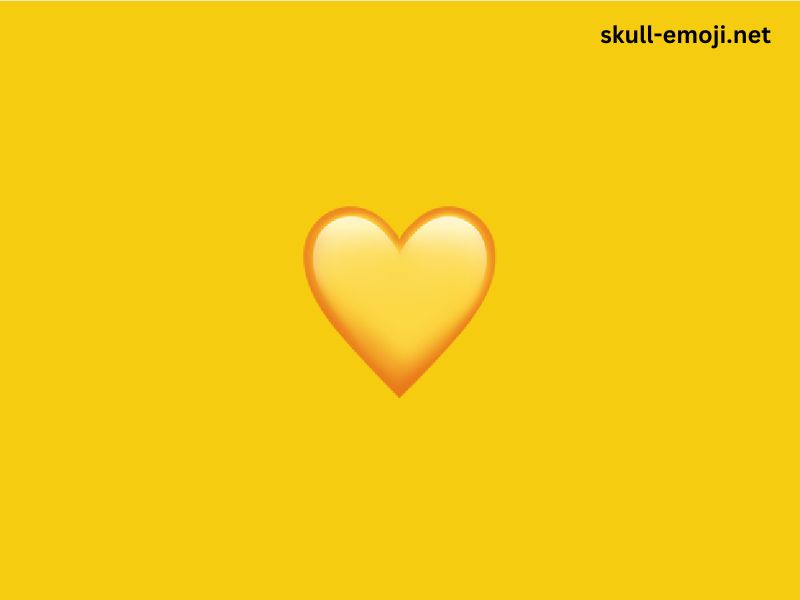In the age of digital communication, emojis have become a universal language, bridging the gap between words and emotions. Among the diverse array of emojis available, the yellow Heart Mean emoji (💛) stands out for its unique significance. While hearts of different colors can convey various feelings, the yellow heart holds a special place in the hearts of many. This article delves into the meanings, contexts, and cultural implications of the yellow heart emoji, exploring its role in our digital interactions.
The Symbolism of Colors
To understand the meaning of the yellow heart, it’s essential to consider the symbolism associated with colors. Colors often evoke emotions and represent ideas. Here’s a brief overview of how different colors are perceived:
- Red: Often associated with love, passion, and romance.
- Blue: Symbolizes trust, calmness, and loyalty.
- Green: Represents growth, harmony, and freshness.
- Black: Conveys power, elegance, or mourning.
- Yellow: Typically associated with happiness, optimism, and warmth.
Given this context, the yellow heart emoji can be seen as a representation of positive feelings and platonic affection. It’s a way to express joy, friendship, and goodwill without the romantic undertones of other heart colors.
The Meaning of the Yellow Heart Emoji
The yellow heart emoji is commonly interpreted as:
- Friendship: Unlike the more romantic red heart, the yellow heart symbolizes platonic love and camaraderie. It’s often used among friends to express affection, support, and appreciation.
- Joy and Happiness: The bright yellow color is reminiscent of sunshine, warmth, and positivity. It can be used to celebrate happy moments or to uplift someone’s spirits.
- Support and Encouragement: In times of difficulty or challenge, sending a yellow heart can signify encouragement. It conveys that you are there for someone, offering positivity and support.
- Playfulness: The yellow heart also embodies a sense of fun and light-heartedness. It can be used in playful banter or to convey a carefree attitude.
When to Use the Yellow Heart Emoji
In Friendships
The yellow heart is perfect for expressing love and appreciation for friends. Whether it’s a simple “thank you” text, a celebration of a friend’s achievement, or just a way to show that you care, the yellow heart can enhance your message. For example, after a fun day out with friends, you might send a group chat message saying, “Had the best time today! Love you all! 💛”.
In Supportive Messages
When someone is going through a tough time, a yellow heart can be a comforting gesture. It shows empathy and a willingness to be there for them. For instance, if a friend is feeling down about work, a text like, “You’ve got this! I believe in you! 💛” can provide a boost of encouragement.
In Celebratory Contexts
The yellow heart is also suitable for celebratory messages. If a friend shares exciting news, such as a new job or a personal achievement, responding with, “Congratulations! So happy for you! 💛” can convey your genuine joy for them.
In Light-hearted Conversations
In playful chats, the yellow heart can add a fun element. It can be used to tease or share a joke without any serious undertones. For example, a playful jab at a friend’s cooking might be accompanied by, “Your cooking is legendary! 😂💛”.
Cultural Contexts and Variations
While the yellow heart generally has a positive connotation in many cultures, interpretations can vary. In some regions, colors may carry different meanings based on cultural contexts. Here are a few considerations:
- Western Cultures: In Western societies, the yellow heart is predominantly seen as a symbol of friendship and happiness.
- Eastern Cultures: In some Eastern cultures, yellow can represent courage or bravery. Therefore, a yellow heart might also imply admiration for someone’s strength or determination.
- LGBTQ+ Community: Within the LGBTQ+ community, the yellow heart has been embraced as a symbol of friendship and support, often seen in messages of solidarity.
The Evolution of Emoji Usage
The popularity of emojis, including the yellow heart, has skyrocketed with the rise of social media platforms. The way people use emojis can change over time, influenced by cultural trends, online movements, and societal changes. For instance, the rise of mental health awareness has seen an increase in the use of supportive emojis, including the yellow heart, as people seek to foster kindness and compassion in their interactions.
Generational Differences
Different generations often have varying relationships with emojis. Younger generations, like Gen Z, tend to use emojis more fluidly, often incorporating them into everyday language. They might employ the yellow heart to represent a wide range of emotions, while older generations may reserve it for more specific sentiments like friendship.
Misinterpretations and Nuances
Despite its generally positive meanings, the yellow heart emoji can sometimes be misinterpreted. Here are a few potential nuances to keep in mind:
- Context Matters: The interpretation of the yellow heart can heavily depend on the context of the conversation. In a serious discussion, it might come off as flippant if not used appropriately.
- Relationship Dynamics: Depending on the nature of your relationship with the recipient, a yellow heart can convey different messages. For example, among close friends, it’s a sign of affection, while in a more distant relationship, it might be perceived as overly casual.
- Mixed Signals: If someone sends a yellow heart in response to a romantic advance, it could lead to confusion. The sender may not intend to signal romance, while the recipient might read it differently.
The Role of Emojis in Modern Communication
Emojis, including the yellow heart, have transformed how we communicate. They provide a way to convey emotions and tone that words alone may not fully express. This is particularly important in written communication, where the absence of body language and vocal inflection can lead to misunderstandings.
Enhancing Emotional Connection
Using emojis can enhance emotional connections in conversations. A simple yellow heart can brighten someone’s day, add warmth to a message, or signify that you care. In an increasingly digital world, where face-to-face interactions are sometimes limited, emojis play a crucial role in maintaining personal connections.
Building Community
The use of the yellow heart emoji also helps build community. When used in group chats, social media posts, or online forums, it can foster a sense of belonging and shared experience. It’s a way of signaling that you’re part of a collective, reinforcing bonds between friends or like-minded individuals.
Conclusion
The yellow heart emoji (💛) is more than just a digital symbol; it embodies feelings of friendship, joy, and support. Its vibrant color evokes warmth and positivity, making it a versatile tool for expressing a range of emotions. As our digital communication continues to evolve, the yellow heart remains a beloved expression of platonic love and encouragement.
Understanding the nuances of emoji usage, especially the yellow heart, enhances our interactions, allowing us to connect more deeply with others. Whether used among friends, in support of someone going through a tough time, or to celebrate joyous moments, the yellow heart serves as a reminder of the power of kindness and positivity in our lives.



